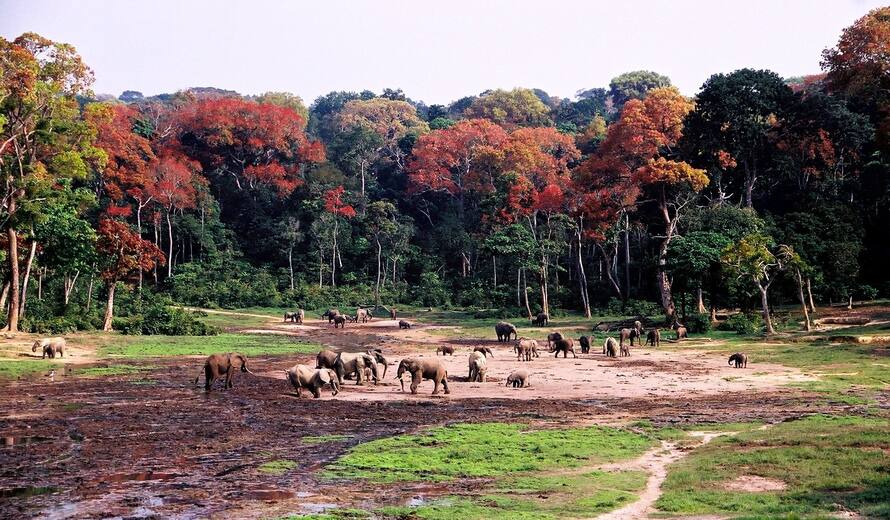World Wildlife Day, 3 March 2021: Forests and Livelihoods
Today is World Wildlife Day with the theme: "Forests and Livelihoods: Sustaining People and Planet," as a way to highlight the central role of forests, forest species and ecosystems services in sustaining the livelihoods of hundreds of millions of people globally, and particularly of Indigenous and local communities with historic ties to forest and forest-adjacent areas. This aligns with United Nations Sustainable Development Goals 1, 12, 13 and 15, and their wide-ranging commitments on alleviating poverty, ensuring sustainable use of resources, and on conserving life on land.
The UNESCO World Heritage List includes many forest areas in all different climate zones (boreal forests, temperate forests, subtropical forests and wood lands, tropical forests, mangrove forests). Ranging in size from 18 hectares (Vallée de Mai, Seychelles), to 5.8 million hectares (Central Amazon Conservation Complex, Brazil), World Heritage forest sites have a total surface area of more than 75 million hectares, and represent over 13 per cent of all IUCN category I-IV protected forests worldwide.
In addition, the List includes forest sites with the most emblematic forest animals in the world. For example, Okapi Wildlife Reserve occupies about one-fifth of the Ituri forest in the north-east of the Democratic Republic of Congo. The Congo river basin, of which the reserve and forest are a part (including Salonga National Park, Democratic Republic of Congo), is one of the largest drainage systems in Africa. The reserve contains threatened species of primates and birds and about 5,000 of the estimated 30,000 okapi surviving in the wild. In south-western Uganda, at the junction of the plain and mountain forests, Bwindi Impenetrable National Park covers 32,000 ha and is known for its exceptional biodiversity including the world’s last remaining mountain gorilla. Bwindi, Virunga National Park and Kahuzi-Biega National Park sites together capture almost the entire Eastern Gorilla population
Because forest sites on the UNESCO World Heritage List are usually the largest and most intact remaining forest areas, they provide important ecosystem services at a global scale, including as carbon sinks. World Heritage forest sites are also key for sustaining people on the planet, which is why we need to ensure that many of these sites are protected from increasing threats.
Forests, forests species and the livelihoods that depend on them currently find themselves at the crossroads of multiple planetary crises we currently face, from climate change, deforestation (for example at Selous Game Reserve, United Republic of Tanzania) to biodiversity loss and the health, social and economic impacts of the COVID-19 pandemic. The UNESCO World Heritage Centre along with some of our partners and mechanisms such as the Rapid Response Facility (RRF) work tirelessly to protect forest sites. A recent example is the support to Bwindi Impenetrable National Park during the pandemic crisis.
On World Wildlife Day today, join us in reflecting on the importance of forest-based livelihoods and seeking to promote forest and forest wildlife management models and practices that accommodate both human well-being and the long-term conservation of forests, forest-dwelling species of wild fauna and flora and the ecosystems they sustain, and promote the value of traditional practices and knowledge that contribute to establishing a more sustainable relationship with these crucial natural systems.
Learn more about the Central Africa World Heritage Forest Initiative (CAWHFI)
Meet one of the guardians protecting World Heritage forest site, Ecosystem and Relict Cultural Landscape of Lopé-Okanda (Gabon), Prosper-Prost Ntoutome Mba:
